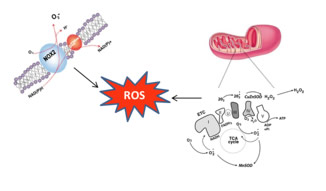EASYCAL
TITLE:
UBIQUITIN E3 LIGASES AS CRITICAL SENSORS IN PHYSIOLOGICAL AND PATHOLOGICAL CONDITIONS
EASYCAL
FINANCING SCHEME:
-PRIN 2015 (Prot. 20152CB22L) “Ubiquitin E3 ligases as critical sensors in physiological and pathological conditions”
SHORT DESCRIPTION AND USEFUL INFO :
The main objective of this research activity is to gain insights into the molecular etiology of Cockayne syndrome (CS), a cancer-free multi-system disorder defective in both transcription and DNA repair and characterized by neurological abnormalities.
The molecular mechanisms responsible for the peculiar clinical features of CS-namely, mental and physical retardation, developmental abnormalities and ageing-are still largely unknown.
There is clear evidence that CS proteins are involved in the response to oxidative stress, and this function has been implicated in the developmental and neurological abnormalities typical of CS patients. CS cells present increased levels of intracellular reactive oxygen species, an intense glycolytic metabolism, and mitochondria abnormalities. Mitochondrial dysfunction and alteration in the autophagic pathways have been reported in neurodegenerative diseases.
We intend to clarify the role of CS proteins in the mitochondrial dysfunction as well as in the autophagic process. Moreover, in order to verify whether alterations in oxidative DNA damage responses might be somehow implicated in the pathogenesis of CS, new designed anti-oxidant drugs targeted to mitochondrial reactive oxygen species will be also available to be tested. The knowledge derived from this study should shed light on the strategies of response to oxidative stress in human cells, and on the processes/lesions that ultimately cause the specific features of CS.
PRINCIPAL INVESTIGATOR :
BARBARA PASCUCCI, IC-Roma, 0690672631, barbara.pascucciATmlib.ic.cnr.it

Main sources of ROS. The enzymes of the mitochondrial electron transport chain as well as NAD(P)H oxidases (in particular NOX2 and its associated membrane subunit p22phox) are indicated.
